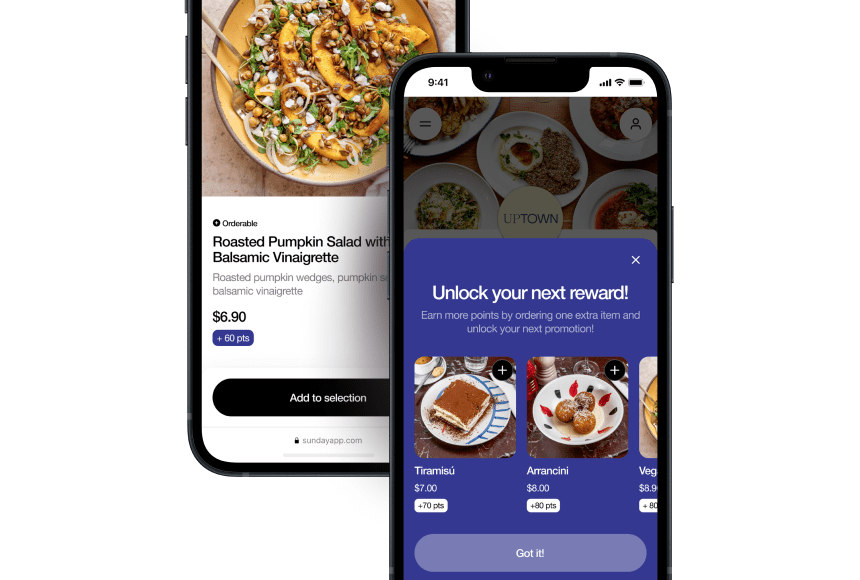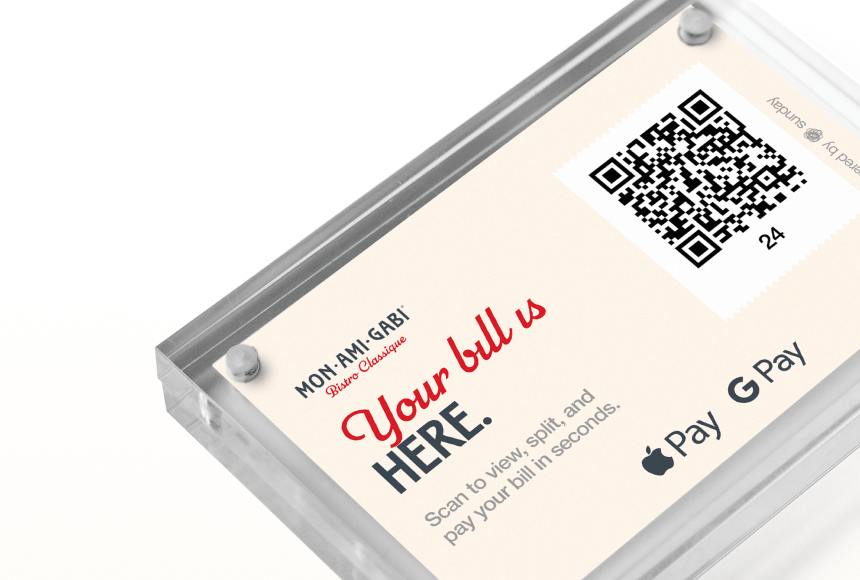
Is Your Outdated Payment Terminal Eating into Your Bottom Line?
What Does “Outdated” Really Mean?
Picture this: you’ve been running your restaurant for some time now, and the payment terminal you use is still chugging away. It might be the same one you’ve used for years—one that doesn’t accept contactless payments, processes transactions at a snail’s pace, and often requires extra steps for your servers and guests. In other words, it’s a dinosaur in a space-age world.
A payment terminal (sometimes called a POS terminal or card reader) is “outdated” when it lacks the features that customers and businesses expect from modern payment technology. This could be missing contactless support, lack of EMV chip compliance, sluggish processing, unsuitable integrations, or security vulnerabilities. But what’s the real cost to your business when you cling to that old machine instead of upgrading?
In the restaurant world, every minute matters—especially during peak hours. Modern diners expect fast, frictionless checkout experiences. Let’s dig into why keeping that ancient hardware around might actually be draining your profits. You’ll see it goes far beyond just a few extra seconds at the register.
From Slower Transactions to Lost Revenue: The Hidden Financial Impacts
Many restaurant owners get used to small inefficiencies and accept them as “just the way things are.” But those extra seconds add up over a month, a quarter, or a year. And that’s only the tip of the iceberg.
- Longer lines and wait times: When your restaurant is full and each table churns slower due to a payment process that lags, you’re missing out on seating more guests. Fewer seatings equal lower revenue potential.
- Employee productivity drain: Slow terminals mean more time spent tinkering with the device instead of attending to guests or turning tables. This can add up to hundreds of hours lost each year.
- Higher labor costs: With drawn-out payment procedures, you may need more staff on the floor just to keep up. That means increased payroll expenses without a corresponding boost in income.
- Unhappy guests and lost repeat business: A slow payment experience can sour an otherwise pleasant meal, reducing the likelihood of repeat visits—or even prompting negative online reviews.
The extra 5–10 seconds you lose per transaction might not seem worth worrying about, but multiply that by hundreds of transactions every week, and you quickly see the compounding effect. This inefficiency eats into your profit margins and gives the table next door—that’s using efficient, modern technology—a competitive edge.
According to the Federal Reserve’s Payment Systems data, electronic payments continue to rise, and consumers increasingly demand quick, seamless interactions. An outdated terminal can’t keep pace with evolving customer expectations, ultimately costing you money.
Lagging Behind in Payment Options
Not too long ago, accepting magnetic stripe credit cards was enough. But in today’s environment, guests want to pay with EMV chip cards, digital wallets (Apple Pay, Google Pay), contactless cards, and even QR codes. If a guest pulls out their phone to pay and finds out your terminal can’t handle Apple Pay or contactless taps, you create friction in the dining experience. That friction might get your restaurant labeled as “behind the times,” which can affect future visits.
Moreover, younger demographics often prefer paying with their smartphones. According to a recent study on mobile payments, usage of digital wallets and contactless payments has surged, especially among millennials and Gen Z. Ignoring these preferences may nudge you out of the running for these valuable customers. And let’s not forget that many diners care about tipping quickly and having immediate digital receipts, which older machines often can’t handle smoothly.
A restaurant that doesn’t cater to modern payment methods may see lower check averages or fewer impulse purchases. If customers perceive checking out as a hassle, they may be less inclined to linger for dessert or an extra glass of wine. On the other hand, a frictionless payment process can encourage guests to continue ordering right up until the moment they leave, leading to higher sales per table.
Security Concerns in an Evolving Landscape
Security is a top priority for guests. If you’ve ever had to deal with a data breach or hacking attempt, you know the colossal headache it brings—legal fees, mandatory notifications, damage to your reputation, and unhappy customers.
Older payment terminals typically lack the advanced encryption and compliance standards that help protect sensitive cardholder data. Many aging devices fail to meet the Payment Card Industry Data Security Standard (PCI DSS). Worse still, some might not comply with EMV guidelines, making you more susceptible to chargebacks and fraudulent transactions.
While no terminal is 100% hack-proof, modern devices are designed from the ground up with stronger security protocols, encryption keys, and regular firmware updates. Relying on an outdated model is akin to storing your restaurant’s cash in an unlocked register—eventually, it’s going to get you into trouble.
Replacing outdated systems with modern payment solutions is an investment not just in efficiency but also in the peace of mind that comes from knowing your customers’ data is better protected.
Increased Maintenance and Repair Costs
That old, clunky card reader might have been a reliable partner for years, but if it’s showing its age, you could be spending money on repeated fixes and parts replacements. Over time, it might even fail at inopportune moments—like a busy Friday night. When your payment terminal breaks, you’re left scrambling for a backup solution, possibly turning customers away or defaulting to manual payment entries that expose you to errors.
Spare parts aren’t always easy to come by, and hiring a technician to fix outdated hardware can quickly become a pricey affair. Even if the per-service cost doesn’t seem huge, frequent repairs add up. Factor in the downtime: every hour without a functional payment terminal is an hour of reduced sales and frustrated guests.
By contrast, a modern payment terminal typically offers warranties, service guarantees, or remote troubleshooting. Many restaurant owners are surprised how quickly the total cost of ownership (TCO) for a new device can beat out the repeated patch jobs on old hardware.
Bumps in the Dining Experience
To keep your tables full and your guests happy, you need every touchpoint in the guest journey to be smooth—including the moment they pay. When your payment terminal is slow, prone to errors, or can’t handle an automatic gratuity option, you create friction at a point when your guests are ready to head out the door. It’s like finishing a gourmet meal with a stale dessert.
Beyond the direct financial impacts, outdated technology can weaken your brand. Diners might think, “If they’re behind on their payment terminal, what else might be outdated here?” Old-school hardware can subtly undermine your reputation for professionalism and modernity.
On the flip side, a sleek payment experience where patrons can quickly process their bills at the table—no lines, no fuss—often commands higher satisfaction ratings. Tools like QR codes, one-click tipping options (like what sunday offers), and the ability to split checks easily can be the difference between a decent experience and one that gets glowing recommendations.
When Cheaper Is Actually More Expensive
It’s a common misconception that upgrading to a new payment terminal will blow the budget. While the upfront cost of modern hardware can appear daunting, it’s essential to view it as an investment in your restaurant’s growth.
Let’s break it down:
- Fewer repair bills: A newer device dramatically reduces your reliance on maintenance technicians, saving you time and money.
- Potentially lower transaction fees: Some processors offer better deals for using EMV-compliant or certified devices, potentially lowering your per-transaction cost.
- Better tip capture: Modern terminals (or QR-based solutions) frequently streamline tipping. This often leads to higher tips for your staff—keeping them motivated and reducing turnover, thereby saving on hiring costs.
- Increased table turnover and seatings: A quicker checkout means you can accommodate more diners during busy shifts, directly increasing revenue.
While you might be tempted to keep your current hardware or buy a cheaper secondhand device, the long-term expenses—measured in lost opportunities, wasted time, security risks, and frustrated guests—far exceed any short-term savings. The math typically points to a clear conclusion: saving a few dollars initially can cost you substantially in the long run.
Case Study: Alex’s Family Diner—A Cautionary Tale
Let’s illustrate this with a real-life scenario. Consider Alex’s Family Diner, which used a decade-old payment terminal. Alex believed the cost of upgrading wasn’t worth the hassle. Here’s how that strategy unraveled over time.
Slipping Behind on Payment Preferences
In the diner’s area, many regulars started carrying contactless-enabled cards. As the younger crowd showed up, they expected to pay with mobile wallets. Since Alex’s terminal supported neither feature, guests had to insert or swipe their cards the “old-fashioned” way. Gradually, some found the process inconvenient and opted for other nearby restaurants that offered quicker, contactless checkouts.
Hidden Fees and Downtime
Alex’s old terminal stopped working a few times during dinner rush. He had to pay for a technician to come in after hours, which incurred extra fees. On top of that, the downtime caused hour-long outages and forced staff to manually process card numbers. That inevitably led to mistakes—some transactions were lost, others were double-charged, and a few guests left upset.
Security Scare
Eventually, the old terminal failed a security standard, leading to a minor data breach. It wasn’t major, but it was enough to scare off a handful of regulars who never returned. Additionally, Alex had to pay penalties for non-compliance and invest in mandatory cybersecurity training for staff. What started as a cost-saving measure turned into a financial sinkhole.
Turning It Around
After months of mounting issues, Alex decided to invest in a modern terminal with secure, contactless-enabled technology. He paired it with an integrated solution that allowed for easy tipping and faster closeouts. The difference was like night and day. Lines shrunk, table turnover improved, and staff morale soared. A few months later, Alex’s Family Diner recouped most of the costs from those improvements alone—proving that holding onto old hardware longer than needed can truly be more expensive.
The Modern Payment Terminal: A Worthy Investment
You may be wondering: What exactly do you gain by upgrading? Modern payment systems are designed to enhance both operational efficiency and the guest experience. Here are some of the features that drive tangible returns:
- Contactless and Mobile Wallet Acceptance: Meet guests where they are by accepting Apple Pay, Google Pay, and contactless credit cards.
- EMV Chip Security: Lower the risk of fraud and chargebacks by complying with the latest EMV standards.
- Speed and Reliability: Transactions process rapidly, reducing wait times and freeing employees to focus on service.
- Intuitive Tipping Interface: Making tipping simple can significantly boost your servers’ earnings and job satisfaction.
- Easy Integration: Many new terminals seamlessly connect with online ordering platforms and loyalty programs, fostering better data analysis and marketing efforts.
All these features address the core pain points you experience daily when working with an outdated model. The promise isn’t just that you’ll avoid headaches—it’s that you’ll open doors to a more robust, forward-looking business operation.
Old vs. New: A Quick Comparison Table
| Outdated Terminal | Modern Terminal | |
|---|---|---|
| Speed | Slow processing, frequent lags | Fast transactions, quick digital receipts |
| Security | Higher risk of breaches, less compliance | Advanced encryption, EMV compliant |
| Payment Methods | Limited to swipes or older chip tech | Accepts contactless, mobile wallets, QR codes |
| Maintenance | Frequent repairs, difficult to fix | Warranties, remote diagnostics, easier updates |
| Guest Experience | Longer waits, frustrating payment steps | Quick, seamless, higher satisfaction |
| Revenue Potential | Lost sales opportunities | Higher turnover and upsell possibilities |
How Can a Complete Solution Help?
So, you’re thinking of upgrading. Great! But it isn’t just about the shiny new hardware. You also want a solution that makes everyday tasks easier—for you and your team. An integrated payment system that supports real-time reporting, effortless tipping options, and automatic receipt generation can streamline operations from start to finish.
Solutions like sunday cater to modern restaurant needs by enabling diners to scan a simple QR code at their table to pay instantly. Guests can leave a tip within seconds, and they even have the option to post a Google review in a blink. You can reduce server trips back and forth, free up staff time, and improve table turnover. When these features come together, you get a truly seamless experience that aligns with evolving guest expectations.
And here’s something many restaurant owners forget: a modern payment system that integrates with your point-of-sale software allows you to collect actionable data. You can see popular dishes, peak times, best-performing staff, or check averages. With real-time insights, you’re better positioned to make strategic decisions that keep your restaurant competitive.
The Upside of Embracing Change
Change isn’t always easy. But transitioning from that vintage machine that’s held together by duct tape and nostalgia to a modern payment terminal can yield immediate benefits:
- Better guest satisfaction: Quick, convenient payments can make the final impression of your guests’ dining experience a positive one.
- Enhanced staff efficiency: Fewer complicated steps free employees to focus on upselling menu items and ensuring quality service.
- Increased revenue: Faster table turnovers, improved tip capture, and acceptance of diverse payment methods can give your earnings a tangible boost.
- Regulatory compliance: Stay ahead of PCI DSS and EMV regulations to avoid heavy fines and potential legal complications.
- Improved brand perception: Sending the message that you’re modern, forward-thinking, and attentive to diners’ needs is a subtle (yet powerful) form of marketing.
Of course, you’ll want to compare different terminal providers, check their processing fees, and evaluate any hidden costs. But don’t let fear of transition hold you back. In today’s hyper-competitive restaurant market, time waits for no one—and diners rarely forgive a cumbersome checkout process.
FAQ: Addressing Your Burning Questions
Is upgrading my old terminal really that urgent?
It depends on how comfortable you are with continued slow transactions, potential security headaches, and losing customers who want modern payment options. Urgency often hits home the moment you realize how these inefficiencies impact your revenue and guest satisfaction.
How can a modern terminal improve tip collection?
Many modern systems offer intuitive tipping prompts. Some solutions let guests select a tip percentage at checkout with one tap. This simplicity often leads to more frequent and higher tip amounts, keeping your staff happy and motivated.
Are there financing options available?
Yes! Many payment providers offer financing, lease plans, or low monthly payments on new devices. While it’s certainly an investment, most operators find themselves recouping these costs swiftly through saved time, reduced errors, and boosted sales.
What about training my staff on a new device?
It’s natural to worry about your team’s learning curve, but modern terminals are generally user-friendly and come with quick tutorials. Most providers offer comprehensive support, and your staff will likely adapt faster than you think, especially once they see how it simplifies daily operations.
How do I pick the right solution?
Start by listing out your biggest pain points: speed, security, tipping options, or certain payment methods. From there, vet providers who meet those specific needs. Check reviews, request demos, and ask about integration capabilities with your current restaurant management software or POS system. A well-rounded solution will serve you better than a piecemeal approach.
The emotional attachment to your current hardware might be strong. But in an industry where guest expectations keep rising and technology moves at lightning speed, staying ahead of the curve protects your livelihood. An outdated terminal isn’t a harmless relic—it’s a silent thief, nibbling away at your revenue, eroding your customers’ patience, and holding your restaurant back from its full potential.
Find out more today
Drop us your details below and we’ll reach out within the next 24
The payment terminal to make your operation simpler.
Connected to your POS, we offer the only payment terminal specifically designed for restaurants.




